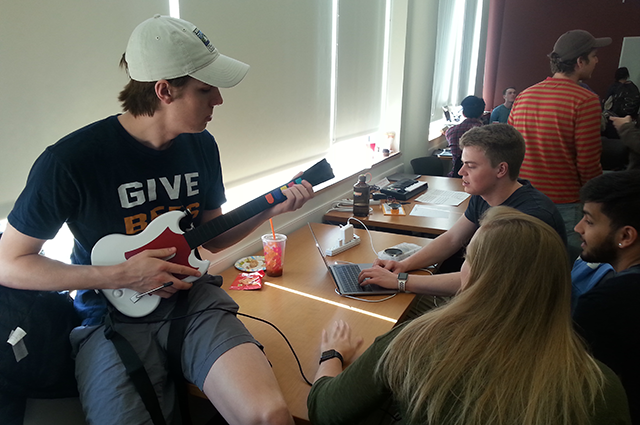Introduction to digital logic circuits

This year, Lecturer Steven Bell redesigned the ES4 course, Introduction to Digital Logic Circuits. While the fundamentals of digital logic are the same as they were 30 years ago, the availability and accessibility of low-cost field programmable gate arrays (FPGAs) provides an opportunity — and an imperative — to rethink how digital design is taught.
The new course focuses on building fun things with real hardware, including multiplexed LEDs, videogame controllers, keyboards, and VGA displays. Every student receives a lab kit with a Lattice iCE40 FPGA and some circuit components, enabling a "flipped lab" where students are not constrained by the location or schedule of the physical laboratory.
Logic design with VHSIC hardware description language (VHDL) is now a central focus of the course, woven through lectures, homework, and labs. Bell created a new web-based VHDL simulation tool, which allows students to practice coding on any device, at any time — even on a smartphone during an in-class exercise. He received a 2019 Tufts Teaching with Technology Award for this work.
The course culminates with a four-week final project, where students work in teams on an open-ended challenge to build an FPGA-based system. The finale this spring was a final project fair where 18 student teams demonstrated their projects, including re-creations of Space Invaders and Pong, racing games, MIDI synthesizers, and more.
Department:
Electrical and Computer Engineering